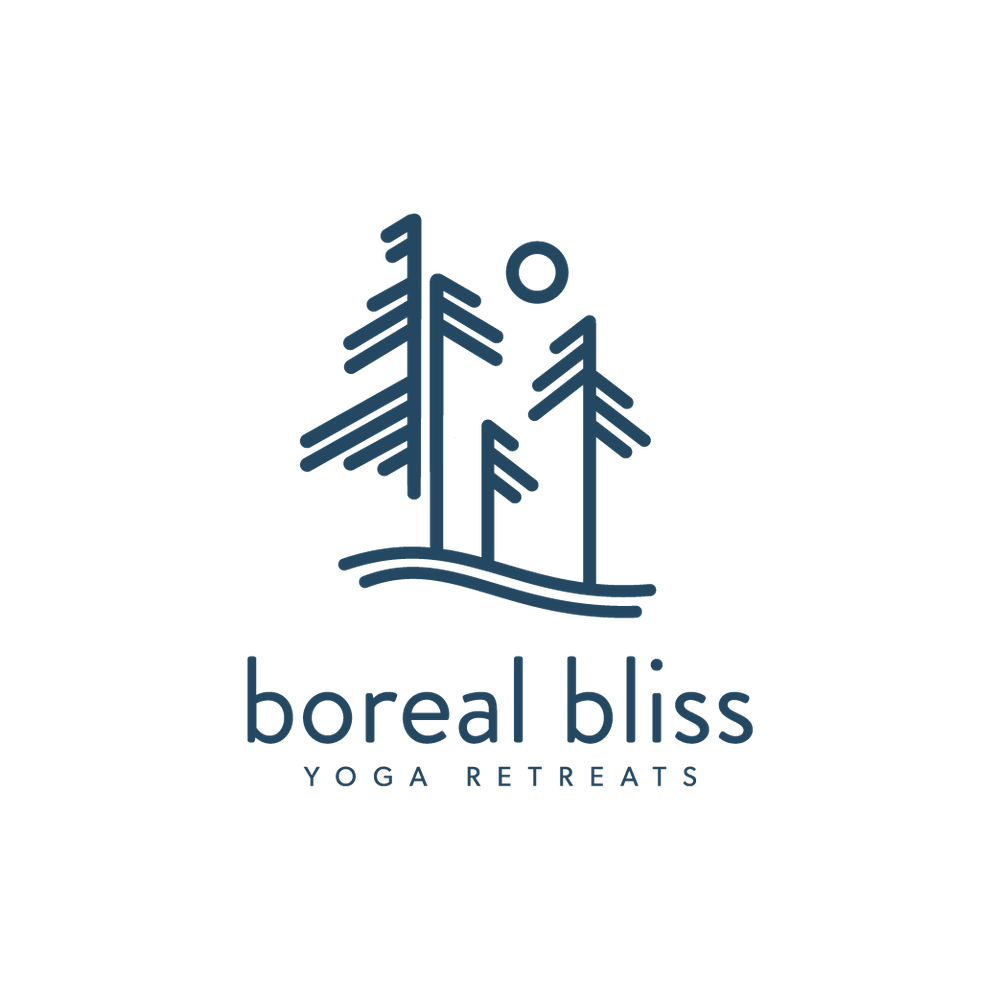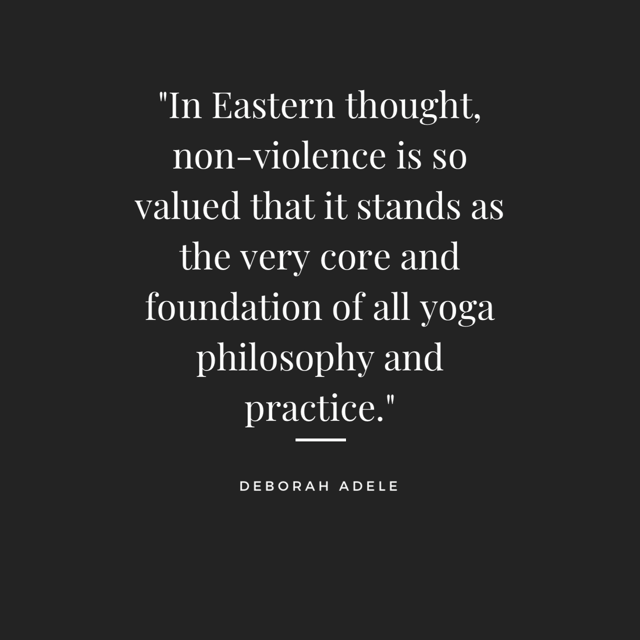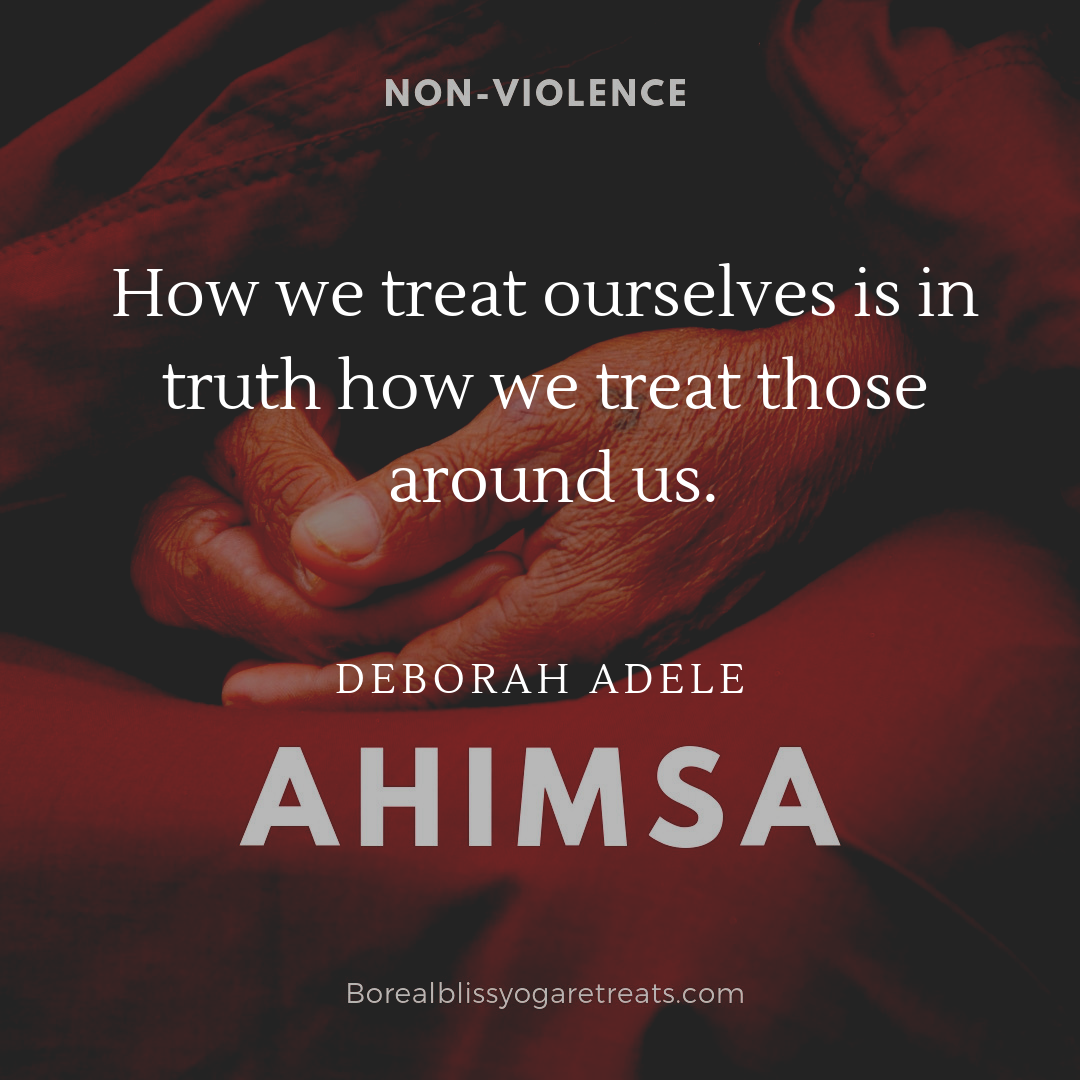Part 1 of 10: Ahimsa (non-violence)
What are the Yamas and Niyamas?
This is the first of a ten-part series exploring the yamas (restraints) and niyamas (observances). The goal of this blog series is to provide a brief introduction to the first two limbs of Patanjali’s eight-fold path- the yamas and niyamas. The eight-fold path comes from the Yoga Sutras of Patanjali. The remaining six limbs include asana (physical postures), pranayama (breath control), pratyahara (withdrawal of the senses), dharana (focused concentration), dhyana (meditation), and samadhi (contemplation, bliss).
In the Western world, we are very familiar with asana, the physical postures of yoga. You’ll notice that the yamas and niyamas are the first two limbs on the eight-fold path, falling before the physical postures of asana. Whether you’ve been to one yoga class or ten-thousand, the yamas and niyamas are gifts of wisdom to provide guidance on the path to a contented and peaceful life.
Both the yamas and niyamas are broken down into five components, for a total of ten guiding principles. The yamas generally provide a context for interacting with the external world, or external ethics. The niyamas provide a context for the body, and inner/spiritual life. Together, these principles are often described as ‘moral codes’ or a path to ‘right living’.
In this series, we hope to provide some ways to begin thinking about yoga off the mat, a yoga lifestyle.
If you are following along, we highly recommend Deborah Adele’s treasure of a book, The Yamas and Niyamas: Exploring Yoga’s Ethical Guide.
Yamas (external ethics)
Ahimsa (non-violence)
Satya (truthfulness)
Asteya (non-stealing)
Brahmacharya (non-excess)
Aparigraha (non-possessiveness)
Niyamas (internal ethics)
Saucha (purity)
Santosha (contentment)
Tapas (self-discipline)
Svadhyaya (self-study)
Isvara Pranidhana (surrender)
Ahimsa
At its most literal definition, non-violence suggests that we should avoid killing and physically harming ourselves or others. So check! Just don’t murder anyone and we’re good, right?
I think one could sit with AHIMSA for an entire lifetime and never fully achieve ahimsa in all thoughts and actions. Ahimsa is the foundation of the yamas, the guiding principle behind all others. The remaining yamas, truthfulness, non-stealing, non-excess, and non-greed all guide us to avoid harming ourselves and others.
Upon closer inspection, it is easy to see we all commit micro-acts of violence all the time. We say mean things to ourselves, we force ourselves into asana postures that cause dis-ease within the body, we keep our schedule so full that we don’t allow time for rest and rejuvenation. This month, I invite you to bring awareness to ahimsa in the eight ways outlined below.
One: Ahimsa- creating more S P A C E
For me, one of the most important components of Ahimsa is creating more space. What do I mean?
Meditation, asana, and pranayama help us to create space- a buffer between action and reaction. When my meditation practice is strong, I am able to meet inconveniences and hardship from a place of groundedness and calm. Pranayama helps me remember to use breath control during moments of big emotions. Asana helps my body feel strong and my mind clear. Even when my schedule is capital B-BUSY, I retain a sense of slow and abiding peace and calm.
It is this buffer that allows me to laugh at myself when I spill chili on my pillowcase before a weekend retreat. It is this buffer that allowed me to keep a level head when I broke my arm on the eve of what I knew was going to be the most difficult month of my professional career thus far. It is this buffer that helps me pause, think, and breathe before reacting, whether I’m resisting the urge to buy something I really want or taking in heartbreaking news.
That buffer allows me to react in a way I am proud of- it helps me avoid the angry outbursts and retain a sense of calm.
If you’ve never given meditation a chance- I challenge you to try meditation this month. Not a guided meditation on your phone, but a sitting meditation with head above heart. Meditation can be a simple and beautiful practice. I learned by starting meditation with “I am breathing in, I am breathing out” while observing my breath enter and exit the body. Eventually, the words dissipate and I am with the breath.
Meditation is not “thinking about” anything. It is a state of just being- simply breathing in and out. Noticing the breath entering and exiting the nostrils. Kindly observing thoughts that come to mind and sending them on their way.
While uncomfortable at first, and maybe even for a long time, with practice, meditation helps create that internal buffer.
The best part? My buffer is expanding. My ability to pause before reacting improves with practice. It takes time to find the S P A C E, but that investment of time pays back in dividends.
"Like the body the mind and soul need time to rest. We create this rest by a slowing space that we can breathe in. Not more clutter, but more space, space to reflect, space to journal, space for closure, space for imagination, and space to feel the calling of the life force within us." -Deborah Adele
Two: Ahimsa- stop comparing ourselves to others
“I had an addiction to comparing myself to other people. It is an act of violence against yourself when you compare yourself to other people, (because they’re crazy too!)” Iyanla Vanzant in a Super Soul Conversation with Oprah Winfrey
We all know about the scroll.
Social media is not my friend. I have a very unhealthy relationship with those tiny little pictures on my screen. Don’t we all? Why aren’t people liking this photo? What is that person’s job that they just travel all over the world? I wish my body looked like that? How does she have time to keep her house so clean and organized? Why does that person have so many followers? and on and on it goes.
Just, no.
For me, I need to create a buffer between myself and social media. I am not enlightened enough to simply avoid the app. I have to actually set rules and boundaries for myself. Bryana kids that I am obsessive about all my “rules”, but it is necessary for my mental health. My ability to focus and inner calm is disrupted (very) by social media. And while social media is necessary for me to keep up with friends and social activities, I have to be very guarded in my use. (I wrote a whole blog on this topic once, you can read that here.)
The reality is the here and now. Whatever is happening on that tiny screen is an illusion, a distraction. The present moment brings infinite opportunities for gratitude and contentment- the feeling of my dog’s fur under my fingers, a pussywillow blossom, the taste of my coffee- I don’t want to miss out on these opportunities!
Three: Ahimsa- consider meatless Monday!
Bonus! According to the University of Michigan Center for Sustainable Systems, eating vegetarian meals one day a week could say the carbon emission equivalent of driving 1,160 miles (roughly the equivalent of driving from Minneapolis to New York City). Not to mention- many health benefits accompany going meatless one day a week including lowered risk of obesity, heart disease, type II diabetes, and cancer. More info at meatlessmonday.org. Who knows, you may even start eating less meat throughout the week!
I keep our gratitude journal in the kitchen because we frequently hang out in the kitchen. I like to keep it handy so I can jot down moments when I feel overcome with gratitude. Perhaps because the journal is in the kitchen, many of the notes I write down revolve around food. The more I find gratitude in the food we eat, the more gratitude I find! One recent entry reads, “There is something inherently nourishing and satisfying about washing, cutting, and preparing an eggplant that I am just never going to get from a chicken breast.” While I still eat meat, I take great satisfaction in preparing meatless meals and eating many types of vegetables.
Four: Ahimsa-Walk softly (do less harm to the earth, take only what you need)
There are many ways our Western lifestyles inflict harm upon the earth. Taking small actions to live in harmony with nature is often satisfying. What are some small changes you can make to do less harm? Perhaps it’s a firm commitment to always bringing along your own takeout containers and metal silverware/straw. Maybe it’s stashing cloth grocery bags in your car right now to help you remember your own bag. Maybe it’s spending a few hours picking up trash near your home.
For me, this can become overwhelming quickly. I spiral into negative self-talk because I don’t feel I’m doing enough or I feel the situation is overwhelming. I am learning to be gentle with myself. It takes time to shift habits. I celebrate my small victories and continue to strive to do better every day, every season, every year.
Five: Ahimsa-be your own best friend
I typically close my yoga classes with the following:
“Bring your hands to your heart-center to invite kindness into your heart.
Bring your hands to your mouth to invite kindness into your words.
Bring your hands to your forehead, the seat of enlightenment, to invite kindness into your thoughts- both towards yourself and toward others.”
In my mind I always silently say, “especially towards yourself” because we have a tendency to be so nasty in our thoughts about self. My monkey mind is a real piece of work, let me tell ya. I am working on it. When I start obsessing over something I said off-handedly to a coworker 18 months ago, I try to talk myself through it rather than wallowing in the negative self-talk. I find that buffer and say to myself, “oh wait. That thought is very unkind and not actually grounded in reality.” This is an improvement for me!
I share this only to say, I think we are all capable of incredibly cruel negative self-talk. We say things to ourselves we would be horrified to say aloud to anyone, ever. With practice, we can bring awareness to the negative self-talk and say, “okay, that is an irrational thought” take a few deep breaths, and move through the negative emotion. Once again creating S P A C E and a buffer between our true self and our monkey mind.
Six: Ahimsa- Slow down and set boundaries
“Creating balance in our lives is not an easy thing. We are a hungry, noisy people, bombarded with stimulation and advertisements that promise to grant us our deepest desires. If we are not on purpose with creating balance for ourselves, we can easily fall victim to false promises and fill every breathable space with appointments and activities and all the responsibilities that go with a full agenda." -Deborah Adele
If we are experiencing internal conflict, it is more likely we will engage in external conflict. When we are feeling less-than, rushed, or out-of balance, we are more likely to lash out at those we love the most. When our schedules are demanding, we are more likely to become demanding of others. Prioritizing the things that bring us contentment and joy have ripple effects in our life.
This is America! We are SO BUSY! We hold ourselves to incredibly high standards! For the past few years I’ve worked hard to take a moment before committing to just about anything.
When I prioritize taking hikes with my husband, weekends in the BWCA, eating in ways that are nourishing, moving my body, and dedicating time for rest and relaxation, I find that the negative self-talk is much more quiet.
While at first it was difficult to decline invitations or to gently say no to various activities, it has gotten easier with practice. As long as I come from a place of honesty and say, “I really care about you but I just can’t commit at this time,” most of my friends have been understanding. We each have different thresholds for extroversion. It’s important to honor your own threshold and set healthy boundaries. Just because you are invited to something, or asked to do something, does not mean your attendance is required. Remember, you have the power of choice.
You may also be thinking, “hmm. I’m already in a situation that is very energy draining and there is no way out.” This could be a demanding work schedule, the demands of running your own business, a demanding family situation, a summer full of weddings and showers, or a friend group that loves to text you at all hours of the day! Know that you always have the opportunity to establish boundaries. Often, simply speaking openly and honestly about a situation is all it takes.
Knowing the activities that bring you into balance is a great place to start. Do you know the activities that bring you into alignment and contentment? If so, what are they?
"When we are in balance, we automatically live in nonviolence." -Deborah Adele
Seven: Ahimsa- on the mat
I have hypermobility. This means that it’s easy for me to drop into the splits or a backbend without warming up. I can fold myself into yogic shapes. It also means that I have a repaired ACL and a repaired ankle as hypermobility often induces injuries. As someone that is “naturally flexible” I have noticed that others will say things like, “I WISH I could do that!” In actuality, my work in non-harming on the mat is to focus on strength, and less flexibility, in order to treat my body well.
While we can improve our flexibility or strength with practice, our bodies are anatomically unique. This is not good or bad, it just is. Bryana has been a great teacher in practicing yoga in an anotomically sound way. I used to blow through every chataranga without a second thought for my shoulders. I forced myself to do every pose, despite pain or discomfort. Now, with more pauses, considerations, and space, I take the time to think about whether or not a certain pose or movement is good for me.
At our retreats we encourage yogis to take as many modifications as needed and to use props to make poses more comfortable and accessible. We encourage yogis to back off of poses the moment anything feels uncomfortable.
And so, I invite you to practice ahimsa in your yoga practice!
Eight: Use a sankalpa to incorporate ahimsa into your life
Last fall Bryana introduced me to a sankalpa practice. Using sankalpas has been transformative for my mindset. My original sankalpa was “I sleep in a way that is nourishing.” I said the sankalpa over and over before falling asleep with the intention of sleeping on my back instead of twisted up into a contorted ball, mashing my shoulders and neck. Then I moved on to, “I move in a way that is nourishing.” This sankalpa helped encourage me to MOVE and has helped me back off when doing asana or exercise that feels uncomfortable in my body. Most recently, my sankalpa has been “I eat in a way that is nourishing.”
If you’ve never used a sankalpa before, I highly recommend it! Sankalpas help bring awareness to habits or narratives we are trying to shift. With practice, we can alter neural pathways and rewire our brain.
Because the topic of ahimsa is so vast, using a sankalpa can be a useful way to bring focus to integrate a new way of thinking into your life.
Journal Prompts
What are some key takeaways from this post for you?
What is one small way you can begin practicing non-violence toward yourself.
What is one small way you can begin practicing non-violence toward others/the earth?
Are there any boundaries you need to set? If you are spending large amounts of time on something that drains your energy, perhaps consider letting go of that activity.
Does social media generally leave you feeling energized or foggy and drained? If it is not energizing, what are some ways you can shift your relationship with social media?
On a post-it note or index card, write AHIMSA. Hang this note somewhere you will see it daily to help bring awareness to living in balance. If you are artistically inclined, consider making artwork incorporating this concept. If you are a writer, consider writing a poem about non-violence.
Resources:
The Yamas & Niyamas, Exploring Yoga’s Ethical Practice by Deborah Adele
The Eight Limbs of Yoga, A Handbook For Living Yoga Philosophy by Stuart Ray Sarbacker and Kevin Kimple
YOU MAY ALSO BE INTERESTED IN:
How to Use the Breath to Release Unwanted Emotions
All Natural Spring Cleaning
Setting a Sankalpa
When Change is Brewing on the Horizon



